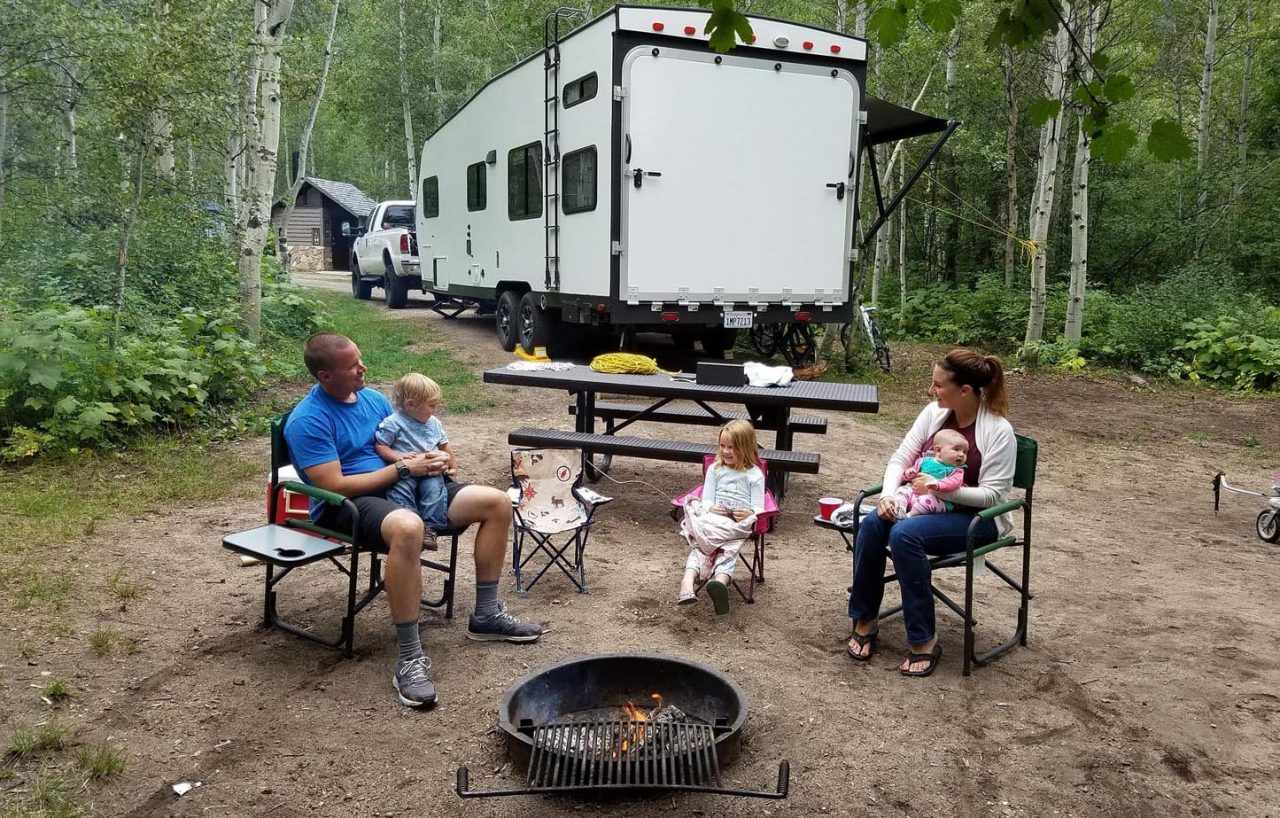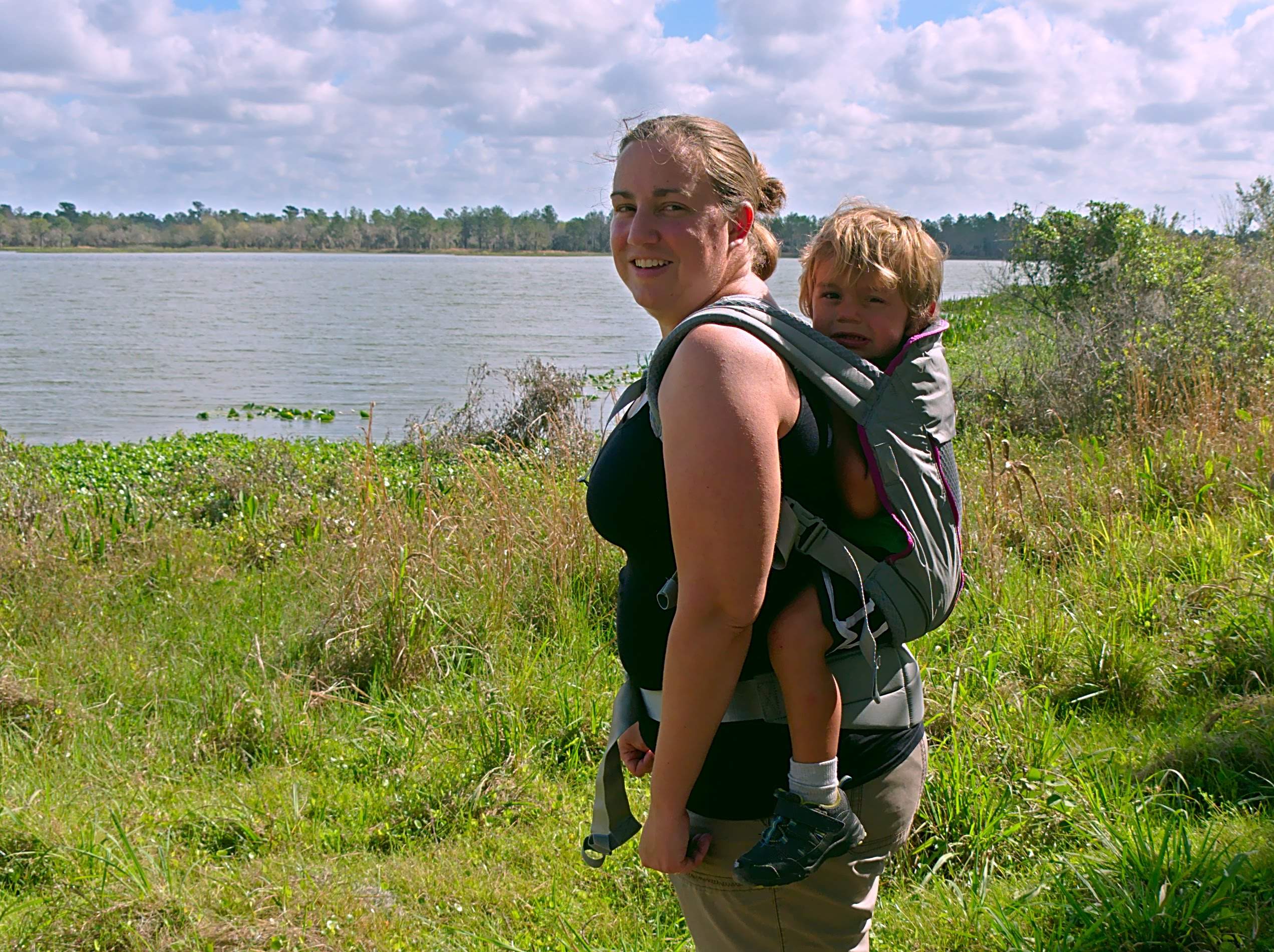Hiking has always been a hobby of ours. My husband and I met while working as camp counselors, where leading groups on hikes was a natural part of our everyday life. We went hiking for our honeymoon and continued to spend our free time on trails near and far. When we had kids, we were excited to keep hiking and bring them along!
As our oldest approaches her tenth birthday, we have had the opportunity to try several different solutions for hiking with our kids. There are advantages and disadvantages to most carrier types, and we sometimes found it convenient to have more than one so that we could choose the carrier that best fit the needs of each child and each hiking environment. Here is what we have learned, through both research and experience, about child carriers for hiking with kids through different ages and stages.
Hiking with Infants, age 0-6 months
Wrap-Style Carrier
In this earliest stage, we chose a wrap-style carrier. Some harness-style carriers are not designed to be used for babies younger than about six months, and using them too early can contribute to hip dysplasia and negatively affect their development.
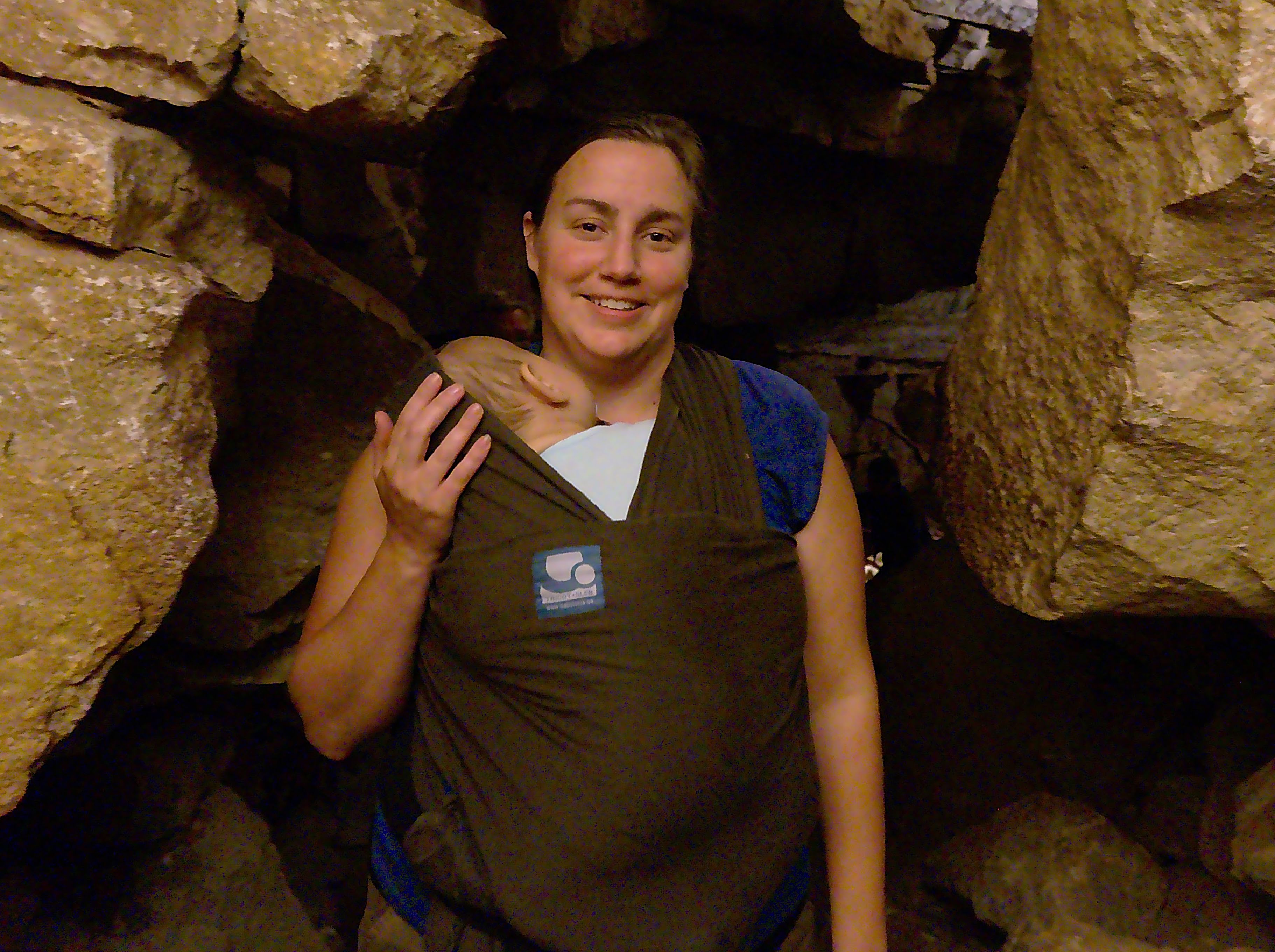
There are many different wrap-style carriers available on the market. We chose the Tricot Slen because it was long enough for both my husband and me to be able to wear and carry our babies. If both parents are petite, a shorter wrap may be more convenient to tie.
Wrap Carrier Advantages:
- Folds flat when not in use. Easy to pack in a backpack.
- Wide age range – from birth until toddler years
- Using different ties allows for carrying your baby in several different positions, on both your chest and your back.
- Breastfeeding while hiking is possible.
- Babies feel safe and comfortable and can nap as needed.
- Shared body heat helps keep the baby cozy in chilly weather.
- Can be worn together with a backpack.
- Easily washed with regular laundry
Wrap Carrier Disadvantages:
- Can be very warm for both the parent and the baby in warm weather.
- Learning to tie can take some practice.
- No storage space to carry anything else.
Hiking with Babies and Young Toddlers, age 6-24 months
Wrap-style carriers can still be a great choice during this stage, but there is a wide variety of other options available for carrying babies and young toddlers. We used our wrap carrier on the trail throughout this phase, but we have also chosen other carriers depending on the circumstances.
Harness-Style Carriers
We started with a harness-style carrier from Infantino with our oldest. The model we had is no longer available, which is just as well because we were not satisfied enough with it to recommend it. It was a budget model and it filled its function, but it was very difficult to adjust the size as we switched between parents, so this is something to consider when shopping for these carriers.
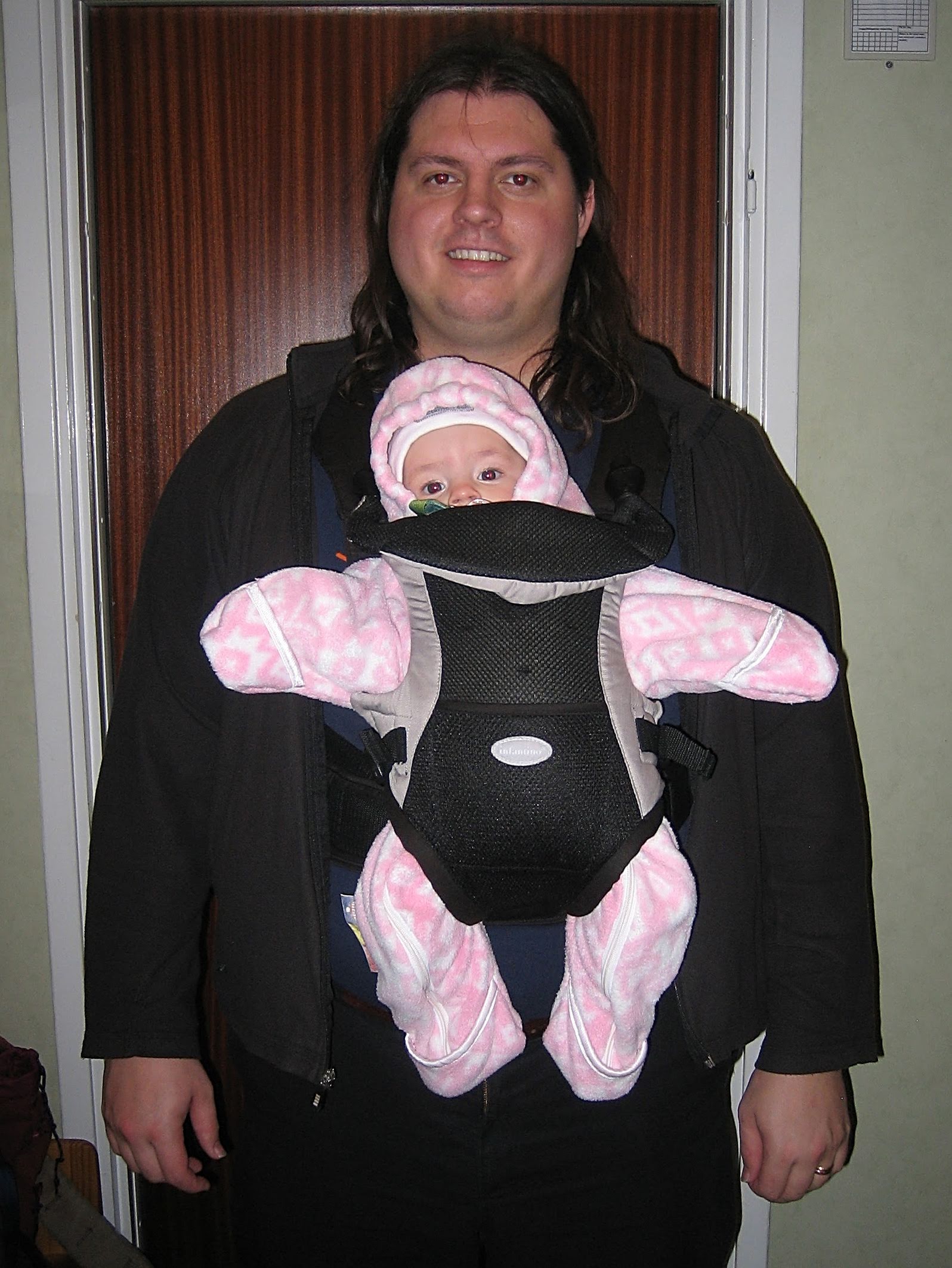
We rarely used it for hiking, but more commonly for shorter excursions in areas where a stroller was inconvenient. We also used it to explore caves, when a backpack carrier was unsafe and too big for tight spaces.
Harness Carrier Advantages:
- Most can be worn on the chest, with the baby facing forward or toward the parent, or on the back.
- Small and lightweight. Usually easy to pack.
- Quick and easy to put on and take off
- The baby feels secure and close to the parent
Harness Carrier Disadvantages:
- Can be difficult to adjust the size between parents
- Little or no space to carry other items
- Carry system may not be comfortable for hiking long distances
Frame Backpack Carriers
An image of a frame backpack carrier is what probably comes to mind when you think about child carriers for hiking. We had one from Kelty that we liked and used a lot, though the exact model we used is no longer available.
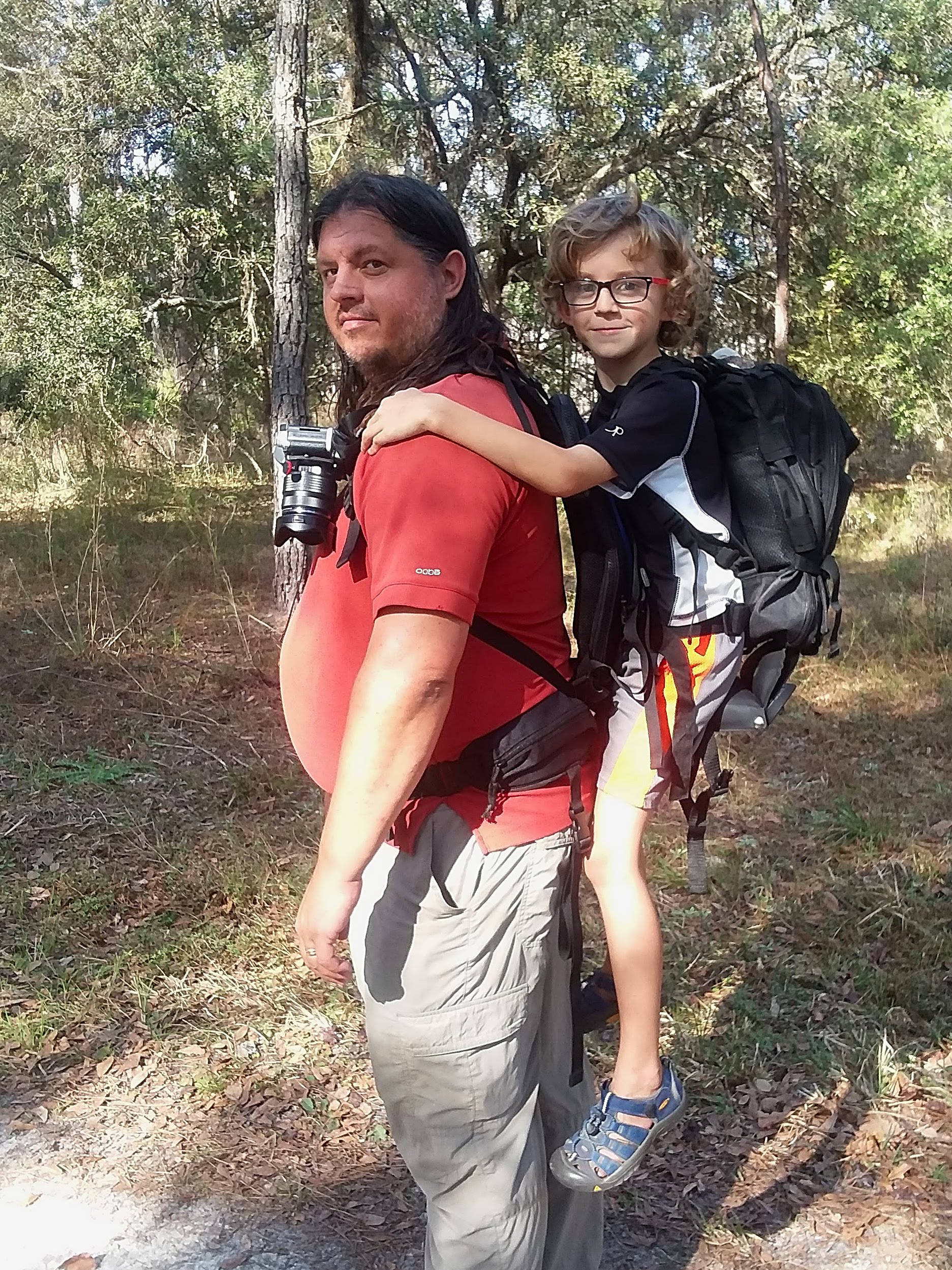
While we frequently used the frame backpack with our first two children, we have chosen not to use one with our third. Our circumstances are different and the disadvantages outweigh the advantages this time around.
Frame Backpack Advantages:
- Comfortable carry system, similar to a backpacking pack.
- Frame offers extra protection for the baby
- Daypack space on the back for food, water, jackets, or other helpful items. (Ours was a detachable daypack, which was a feature we really appreciated.)
- On some models, the frame is self-standing when not being worn, so it can double as a high chair for meals on the trail.
- A sun shield can be attached to give the baby shade. (No more chasing the hats they throw off every few minutes!)
- The baby feels secure in the harness but has room to move around. Our kids napped well in the frame backpack.
Frame Backpack Disadvantages:
- Large and bulky – difficult to travel with.
- The frame itself adds weight.
- Can’t be used in tight spaces.
Hiking with Toddlers and Preschoolers, age 2+
Our youngest is now two and a half, but we often carry him on hikes so that our older kids are not limited to exploring trails where his little legs can carry him. We anticipate this being true for several years. We carried him in a wrap-style carrier until he was about two when it started to be uncomfortable to do so on longer hikes. He also started trying to escape, which made it feel like a less-secure option on difficult terrain.
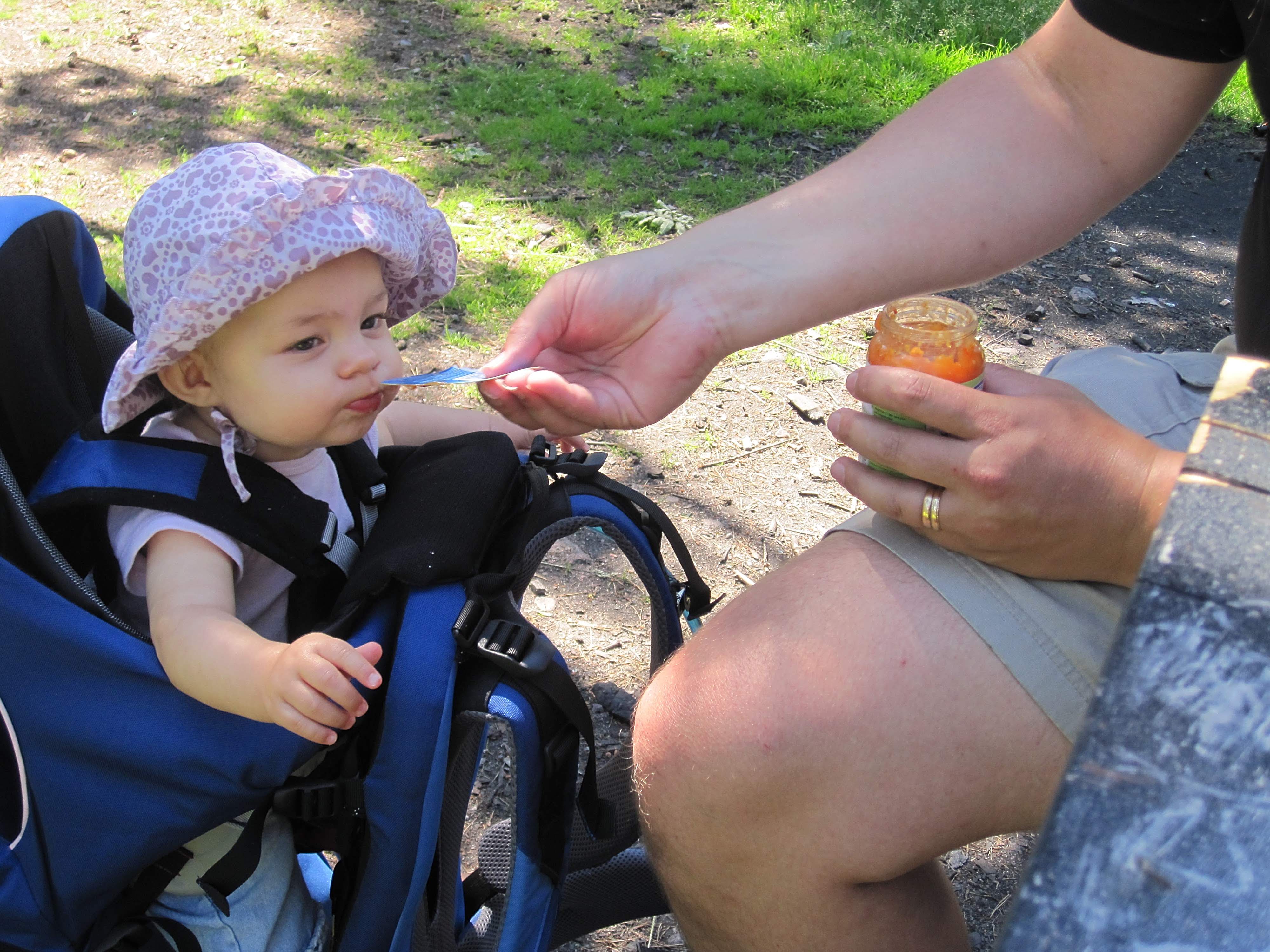
Most harness-style carriers and frame backpacks are rated for children weighing up to about 40-45 pounds, so we did not want to invest in a carrier that he would outgrow quickly.
We hope to raise our kids to be good hikers, and this means giving them lots of opportunities to hike on their own two feet starting at an early age. We don’t want our little guy to be carried for the whole hike, and he makes it very clear that he doesn’t want this either. But for the sake of our older kids, we don’t always limit our trail selections to trails that fit his ability level. For this reason, we were looking for carriers that would be easy to get him in and out (and in and out and in and out) as needed. He also still needs an afternoon nap, so on all-day hikes, we want him to feel comfortable enough to fall asleep. We tried two different carriers: The Freeloader, and the Onya Pure.
The Freeloader
The Freeloader caught our attention because it had a minimum age of two and a half, while most other carriers are starting to reach their max at that age. It is rated for up to 80 pounds, and it has been used to allow older children with special needs to be carried on hikes they might not otherwise be able to go on. It was even used by a father who carried his disabled son to the summit of Mt. Kilimanjaro.
There’s a lot that we like about the Freeloader, but it didn’t turn out to be the perfect solution it sounded like on paper.
Freeloader Advantages:
- Can be used to carry preschoolers and even older children.
- In the event of injury, older children can be safely carried by the parent.
- Seat folds up flat against the frame when not in use.
- Small pockets on the hip belt give space to carry a few small items.
Freeloader Disadvantages:
- Frame size is not adjustable. We measured according to the size chart and thought a medium frame would fit both of us, but it is not as comfortable as we would have hoped. If parents are very different in height, they cannot both use the same Freeloader.
- Cannot be used with babies or younger toddlers. Children need to be big enough and able to support themselves while riding.
- The harness is very basic; our son did not feel secure enough to fall asleep. When buckled in, he expressed fear of falling out. He also was able to easily take his arms out of the harness while in motion.
- No space to carry water, food, or other helpful items.
The Onya Pure
We tried the Onya Pure on the recommendation of someone who was still using it for hiking and carrying her five year old. According to the product description, it is recommended up to 45 pounds like many other carriers, but personal testimony from someone stretching that boundary a little was enough to convince us to try it.
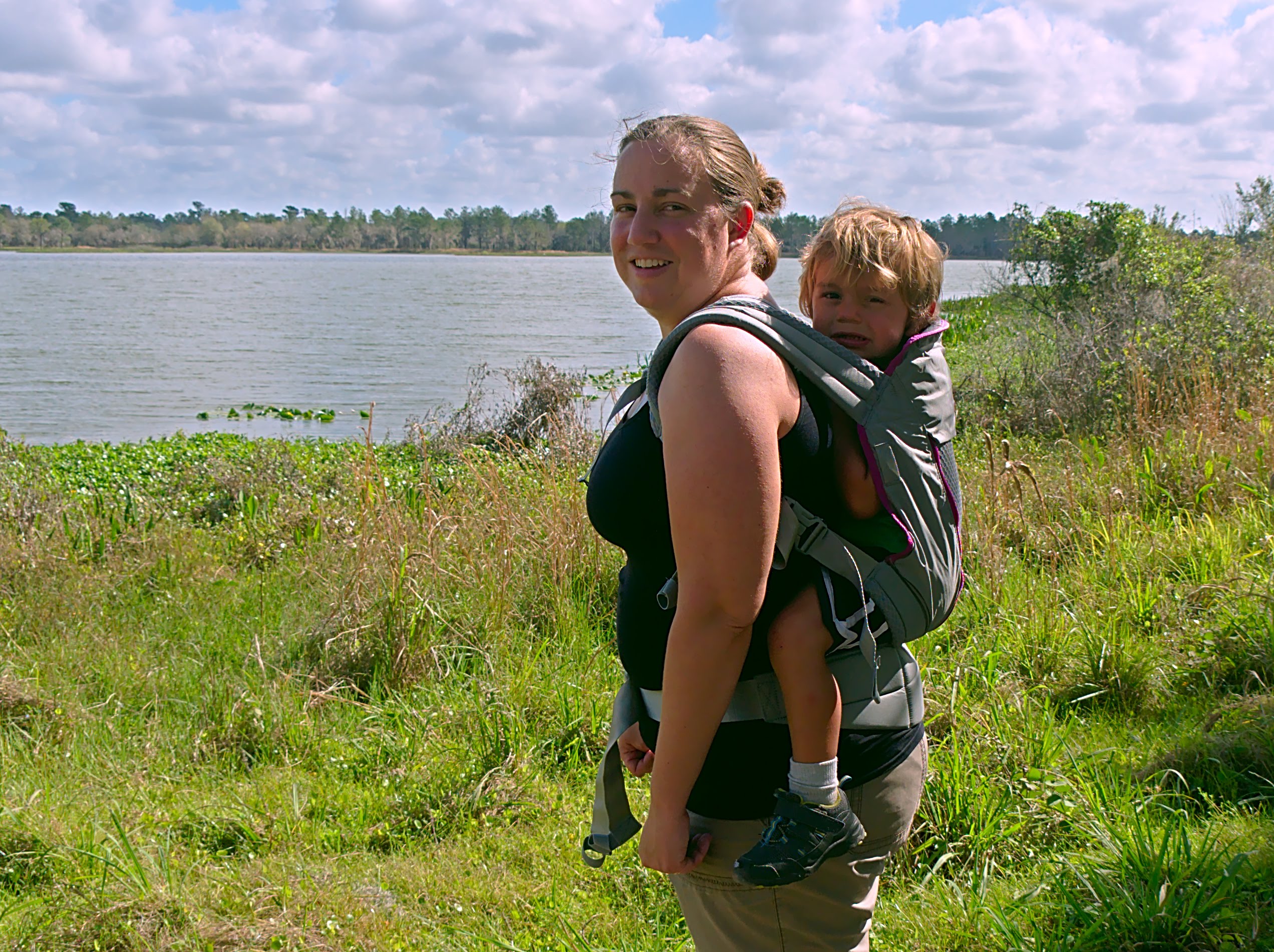
We love the Onya Pure, and it is currently our go-to carrier.
Onya Pure Advantages:
- Its well-designed carry system is extremely comfortable.
- Frameless design means it rolls up small and light, easy to pack in a backpack.
- Our toddler feels secure and well-supported. He is in direct contact with the carrying parent.
- Quickly and easily adjust to fit different children or different parents.
- Pocket against the child’s back can be opened for ventilation or closed to hold a water bladder or similarly sized items.
- While not recommended by the manufacturer, we tested it with our 7 and nine-year-old children as well. It was not nearly as comfortable, but in an emergency, it would work.
- Can be used by younger babies, even newborns (with a newborn insert).
Onya Pure Disadvantages:
- Can be very warm for both the parent and the baby in warm weather.
- There is a learning curve to getting the child in the carrier by yourself. Getting them out is very easy, though.
Finding the right carrying solution for your family can take some time and experimentation, and the solution might change as your child(ren) grow, but it is well worth it to make sure your kids grow up learning to value and enjoy nature. For help to find family-friendly trails near you, try this resource from Hike it Baby. Happy trails to you and your little one!


